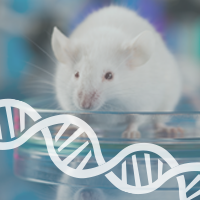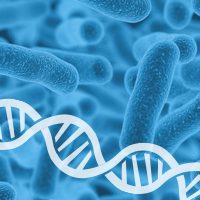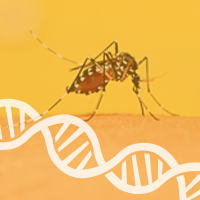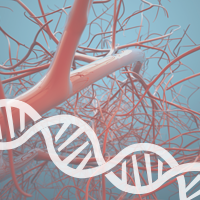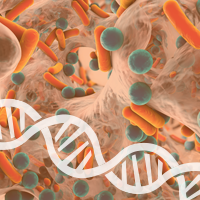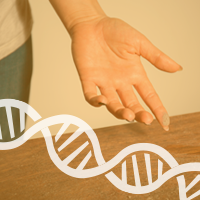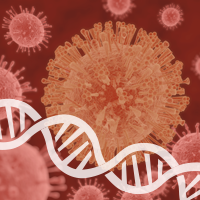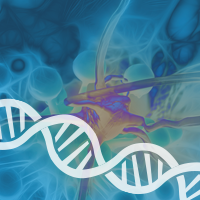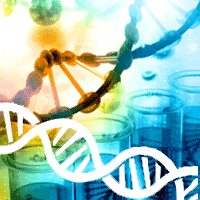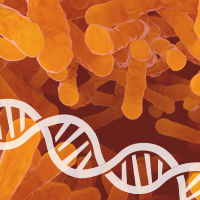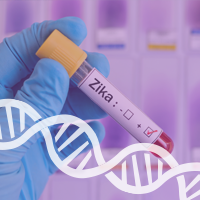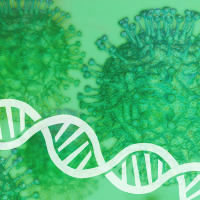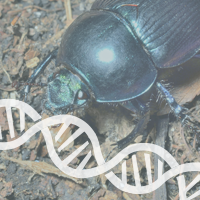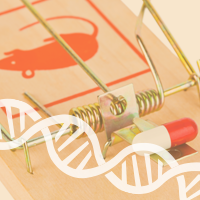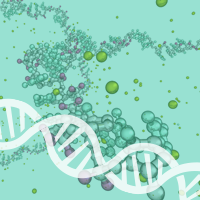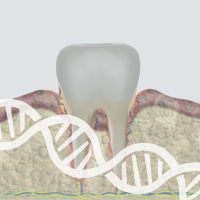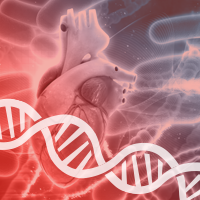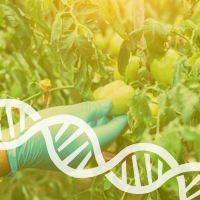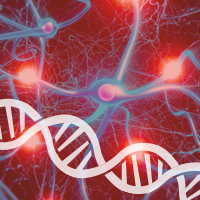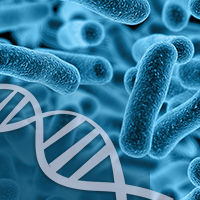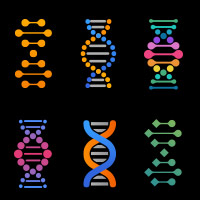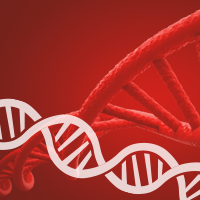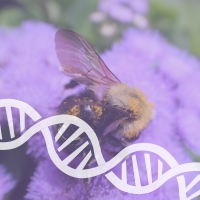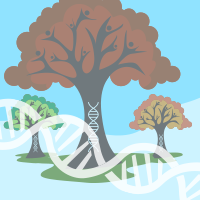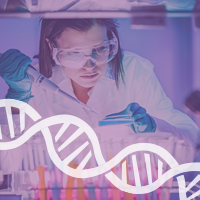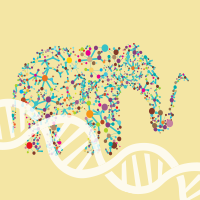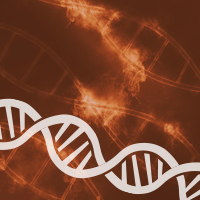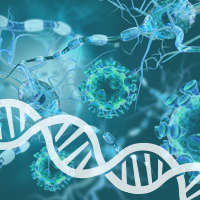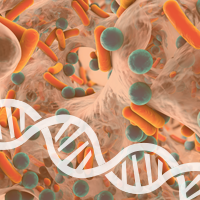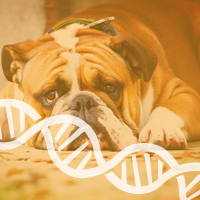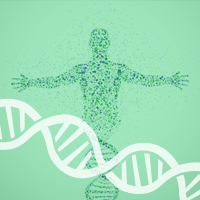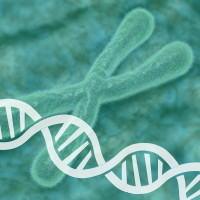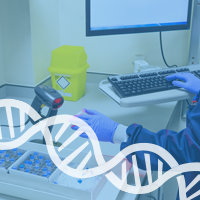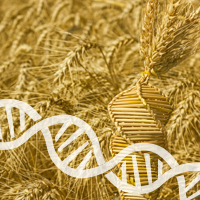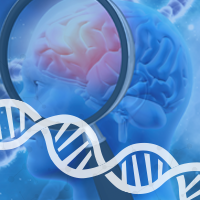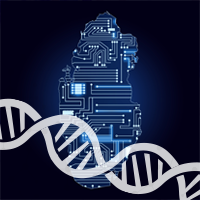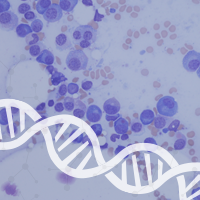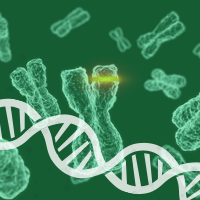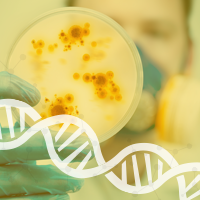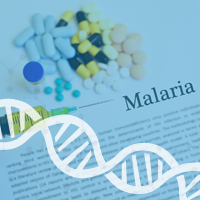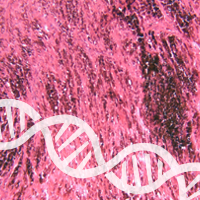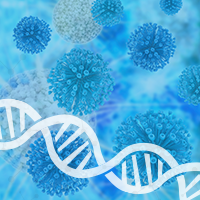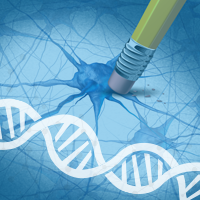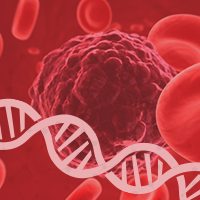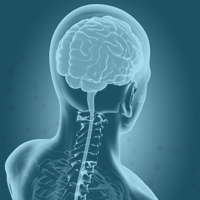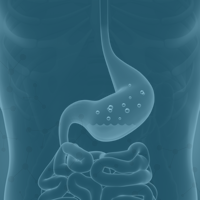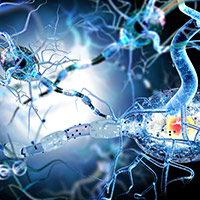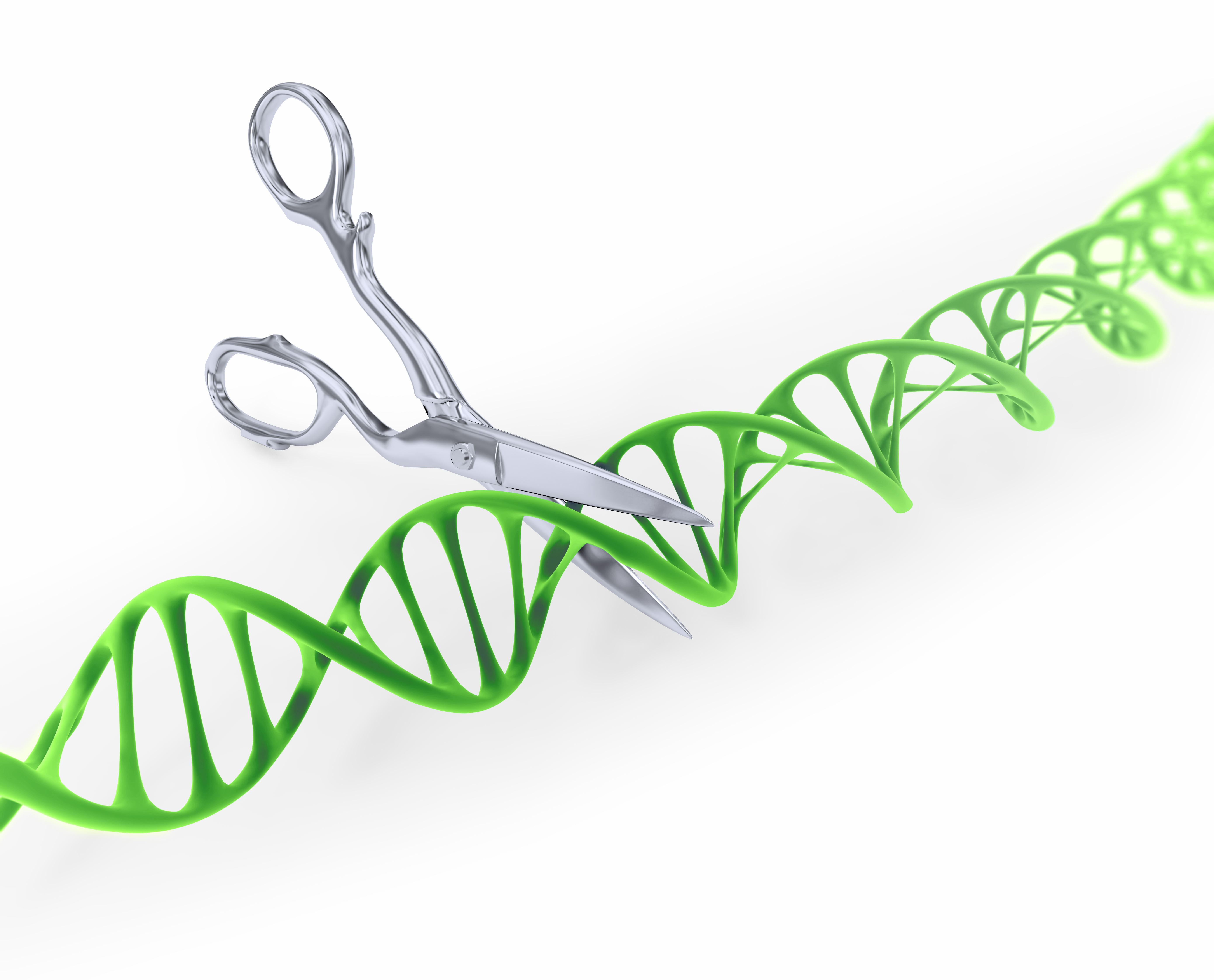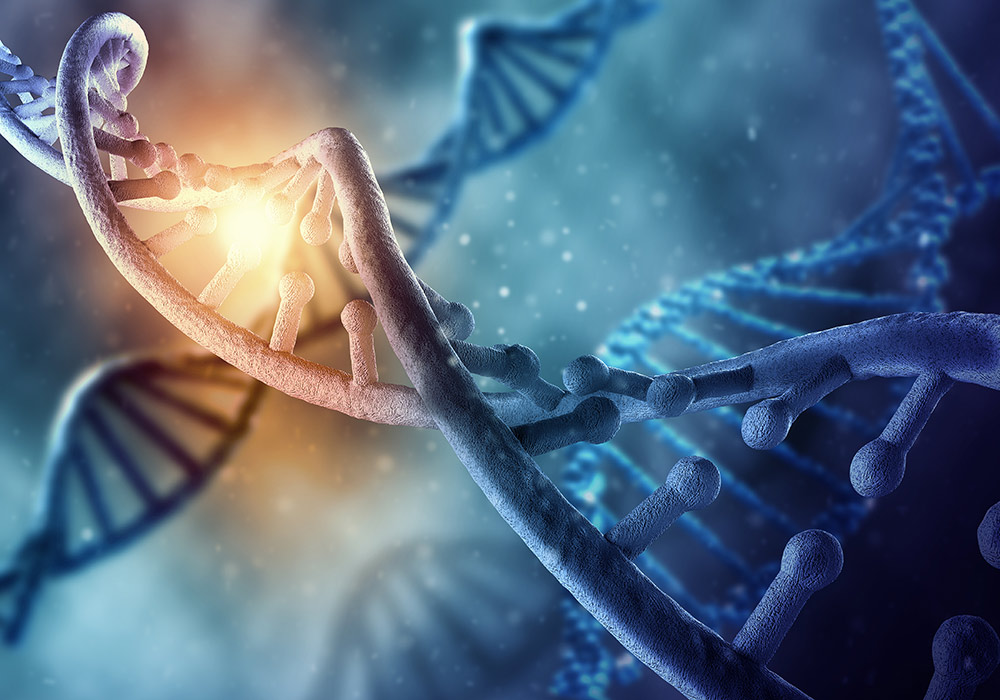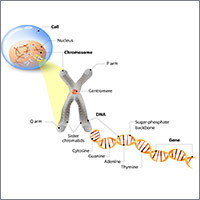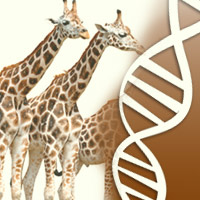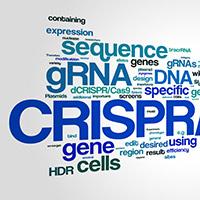News In Genomics
NEWS IN GENOMICS brings to you some of the most exciting news in the areas of genomics research as well as drug discovery.
Have an article you’d like to share? Let us know! You can email our team at marketing@genewiz.com.
September 2017
Mutated Cas9 improves CRISPR gene editing
In a recent study, Jennifer Doudna’s team at the University of California, Berkeley, designed a new variant of the Cas9 nuclease. By tweaking a portion of the nuclease called REC3 that is involved in sensing the accuracy that Cas9 binds to a stretch of DNA, the team was able to create a new hyper accurate form of Cas9 (HypaCas9). This new variant shows high genome-wide specificity with minimum off-target cuts. The research significantly improves accuracy of CRISPR-based genome editing.
References: Link to the reference
Picric Acid Helps Strengthen Bones in Diabetics
In a recent study from The Scripps Research Institute, Florida, researchers have discovered the effect of TNP (2,4,6-trinitrophenol, also called picric acid), a compound used in diabetes and obesity studies, in increasing the formation of bone cells in mice fed with a high-fat diet. This contrasts with many other diabetes drugs that weaken patients’ bones. The research will help in treating osteoporosis and other conditions that lead to bone loss.
References: Link to the reference
August 2017
Applied physics and mathematics look at how to help safely release genetically modified genes
New research from the Harvard John A. Paulson School of Engineering and Applied Sciences discusses how mathematical modeling can safely control the release of genetically modified organisms into the wild. The research proposes a framework to responsibly control gene drives that will both allow and control gene spreading.
References: Link to the reference
Skin grafts with altered GLP-1 expected to replace insulin injections for diabetes
Researchers at the University of Chicago have used CRISPR gene-editing to modify the GLP-1 gene, which encodes a hormone responsible for triggering insulin release. Transplanting skin grafts with modified GLP-1 onto diabetics could be a wise alternative to daily insulin injections. The study can also be insightful for using gene therapy for treating other types of diseases.
References: Link to the reference
Increased expression of Bmal1 in skeletal muscle (and, not brain!) linked to sleep deprivation recovery
A new study by UCLA scientists reported that the expression level of Bmal1, a gene that regulates sleep patterns in skeletal muscle, was responsible for the ability of mice to recover from sleep loss. The research might lead to improved treatments for insomnia and other sleep disorders, and may also help combat the risks associated with sleep deprivation.
References: Link to the reference
TAK1 inhibitor induces TNF-α-dependent apoptosis in rheumatoid arthritis and breast cancer cell models
Researchers from Duke Health have developed a drug-like molecule called Takinib, a TAK1 inhibitor that selectively induces apoptosis in TNF-α-stimulated cell models of rheumatoid arthritis and breast cancer. Further studies to test Takinib's efficacy are underway and might lead to the development of pathway-specific inhibitors for treating other diseases as well.
References: Link to the reference
January 2017
Liquid Biopsy Chip Design May Improve Cancer Detection
Researchers at the Worcester Polytechnic Institute (WPI) have created a new liquid biopsy chip, which can bind to and identify metastatic cancer cells using minute blood samples from a cancer patient. The chip uses antibodies attached to carbon nanotubes at the bottom of a small well. This new chip has the potential to revolutionize tests for metastasis, leading to the development of targeted cancer treatments.
References: Link to the reference
New Bioinformatics Software for Identifying Cancer Driver Genes
Researchers at Johns Hopkins University have developed a bioinformatics software to evaluate methods used to predict cancer driver genes. The tool uses a machine-learning-based method to compare different ways of gene prediction. The researchers hope that the new method will improve current methods for identifying cancer driver genes.
References: Link to the reference
Antibody Cuts Blood Supply to Tumors
The angiopoietin-2 (Ang2)-binding and Tie2-activatin (ABTAA) antibody restores the structural and functional integrity of tumor blood vessels. This is the result of a study by researchers at the Korean Advanced Institute of Science and Technology’s (KAIST) Center for Vascular Research. They used ABTAA to treat breast, lung, and brain tumors with success. Furthermore, the ability of ABTAA to stabilize the walls of blood vessels increases the chances that anticancer drugs can reach the cores of tumors. This breakthrough may prove pivotal in the effort to develop anticancer therapies.
References: Link to the reference
Scientists Find New Epilepsy Gene Network
Scientists have discovered a new gene network linked to epilepsy. The network consisting of 320 genes called M30, affect how brain cells communicate with one another. This discovery may improve treatments for the disease.
References: Link to the reference
December 2016
Rare Genetic Mutation Linked to ADHD
Researchers at The Children’s Hospital of Philadelphia have discovered a link between mutations in the glutamatergic gene network and about 20% of all ADHD cases. The study involved 1,000 children with ADHD across the US. This data offers insights that could translate into effective drug therapies to combat the disease.
References: Link to the reference
Hearing Loss Affects Nerve Cell Wiring
According to researchers at the University of Buffalo, hearing loss alters the auditory system of mice by inducing changes in the structure and behavior of nerve cells. Both short and long periods of hearing loss cause this phenomenon. The scientists observed changes in how information travels from a mouse’s ear to its brain within days of a blockage in hearing. This study paves the way for further exploration into human hearing. For example, can ear infections cause similar changes in humans? Can the auditory changes be completely reversed over time?
References: Link to the reference
Gut Microbes Increase Motor Deficits in Mice
Gut microbes promote motor deficits in mice similar to those caused by Parkinson's disease, according to the latest research. In the study, antibiotics provided relief to mice suffering from these symptoms, while gut microbes exacerbated them. In the future, the insights from this study may be translated into more efficient drug treatments for Parkinson's disease.
References: Link to the reference
Unique Microbes Found in Animal Species
A new study provides evidence that every animal species hosts a unique collection of microbes, which improve the health and fitness of the hosts. According to the data, animal species harboring natural microbiota have a better chance for survival and digested food more easily than those with transplanted microbes. The study focused on four different animal groups.
References: Link to the reference
Soil Produces Medicine-Making Microbes
Close examination of New York City soil reveals that it contains medicine-making microbes. This discovery shows that sequencing and analyzing genes in soil samples can be an excellent method for finding new compounds for use in drug therapies. The researchers involved in the study believe these compounds can be used to fight a plethora of health conditions, ranging from cancers to bacterial infections.
References: Link to the reference
We May Regenerate Our Body Parts
According to a new study, the acorn worm, which is a close invertebrate relative to humans is capable of regenerating its body parts. Since both humans and acorn worms have a similar genetic makeup defined by an ancestral relationship to chordates, this suggests that one day, we may also develop the ability to regenerate our body parts.
References: Link to the reference
Stopping Zika at the Cellular Level
In the search for therapeutic treatments for Zika, researchers have discovered that a human antibody called C10 can stop Zika at the cellular level. The evidence shows that C10 stops the virus by locking proteins of the main Zika virus coat into place, thus preventing viral DNA from entering the cell. Further research into the potency of C10 against Zika could soon translate into the development of effective therapies.
References: Link to the reference
Overcoming Fears Via "Decoded Neurofeedback"
Researchers have utilized artificial intelligence combined with brain scanning technology to create a method for identifying and eliminating certain fears from the brain. Their technique "Decoded Neurofeedback," allows scientists to find specific fear memories. Treating post-traumatic stress disorder (PTSD) and certain phobias with this method may provide multiple benefits over traditional drug and exposure therapies.
References: Link to the reference
Arecoline From Areca Nuts May Have Anticancer Properties
Although arecoline from areca nuts is linked to oral and esophageal cancer, investigators at Emory University have found evidence that it may also have anticancer properties. The study shows that arecoline is an inhibitor of ACAT1, which is an enzyme that plays a role in the Warburg effect during the growth of cancer cells. This information enhances our understanding of how cancer develops in our bodies.
References: Link to the reference
Surprising Discovery Shows DNA Constitutes Only Half a Chromosome
According to new research data, as much as 47% of a chromosome's structure is not made up of DNA. This phenomenon dubbed "chromosome periphery," could be responsible for preventing errors during cell division. The researchers used advanced imaging techniques to produce detailed 3D models of all 46 chromosomes for the first time.
References: Link to the reference
November 2016
Air Pollution Linked To Resistant Bacteria
Examination of air samples from Beijing has revealed that they contain DNA from genes responsible for making bacteria resistant to even the most effective antibiotics. The researchers from the University of Gothenburg studied 864 samples of DNA collected from different environments and organisms. The insight can be used to develop more specific antibiotic treatments.
References: Link to the reference
Humans Inherited Certain Genes from Neanderthals
A new study shows that Neanderthals interbred with our ancestors. Genomic data shows that traces of Neanderthal genes can still be found in the genome of modern humans. We owe various human traits related to our immune system and skin to Neanderthals. These traits were key to helping humans survive outside of Africa.
References: Link to the reference
Asian Long-Horned Beetle Genome
The genome of Anoplophora glabripennis, the Asian long-horned beetle, has been successfully sequenced according to a recent report in Genome Biology. The data revealed genes believed to be linked to the beetle's wood-feeding habits. Using a draft genome assembly, the researchers discovered more than 1,000 genes that are specific to the Asian long-horned beetle. This study will enhance our understanding of how the beetle thrives on woody plants.
References: Link to the reference
Smoking Changes Your DNA Permanently
According to a new study, people who smoke a pack of cigarettes a day may develop hundreds of DNA mutations a year. Scientists report that these mutations spread throughout the entire human body. Their investigation links tobacco smoke to direct and indirect mutations occurring in organs all over the body, even including organs that do not come in contact with smoke.
References: Link to the reference
Dust Swabs Show Diversity of Arthropods in US Homes
Using advanced DNA sequencing, researchers have uncovered a large amount of diversity of arthropods in US homes. They created an "atlas" that shows the range and diversity of arthropods found in homes across the continental United States. Other factors such as having pets, a home with a basement, and living in a rural area contribute to greater arthropod diversity in one's home. This atlas maybe useful in revealing more information about the kinds of allergens in our homes.
References: Link to the reference
Mutated Genes May Not Always Mean Bad News
Although the word "mutation" conjures all sorts of foreboding images, new research shows that not all mutations cause diseases in humans. Examination of human genome sequencing data explains how suppressive mutations can combat disease-causing mutations. Insights from this genetic suppression study can be used to produce treatments for various diseases.
References: Link to the reference
Scientists Identify Genes Linked to Dreaming and Deep Sleep
According to a recent study in Nature, researchers have discovered two genes linked to dreaming and deep sleep: Salt-Inducible Kinase 3 Sik3 (Sik3) and Sodium Leak Channel Non-selective (Nalcn). The data links the gene for REM sleep to that for NREM sleep in mammals. This data can be used to produce new treatments for various sleep disorders.
References: Link to the reference
Artistic Creations With DNA Gel Electrophoresis
At his exhibit at the Esther Klein Gallery in Philadelphia, Paul Vanouse isolated DNA from the combined spit of visitors. Using gel electrophoresis, Vanouse created images with their DNA. Making images such as the American flag with the combined spit, Vanouse hopes to undermine the idea that our DNA holds us captive as an identification card.
References: Link to the reference
Interbreeding Occurred Between Chimpanzees and Bonobos
Research reported in Science suggests that ancient interbreeding occurred between chimpanzees and bonobos. The researchers performed genome analysis on 65 wild-born chimpanzees and 10 bonobos from 10 African countries. They discovered ancient gene flow from the bonobos into the ancestors of central and eastern chimpanzees. This discovery suggests that interbreeding between similar species was common in human and ape ancestors.
References: Link to the reference
Mitochondrial DNA Mutations Linked to Autism Spectrum Disorder
A recent study published in PLOS Genetics provides evidence that mitochondrial DNA mutations are linked to the development of autism spectrum disorder (ASD) in children. This is especially clear in children with lower IQ or poor social skills. This data can be used to improve the diagnosis and treatment of ASD through early detection.
References: Link to the reference
Parasitic Plants Can Steal Genes
New research provides evidence that parasitic weeds can steal host genes and turn them against their hosts. The study documented 52 cases of nonsexual transfer of DNA that led to functional genes within members of the parasitic plant family known as broomrapes. They noticed that parasitic plants were much more likely to have a case of horizontal gene transfer than nonparasitic plants. In agriculture, this data can be used to improve plant defense mechanisms against parasitic attacks.
References: Link to the reference
Pythons Could Soon Grow Legs
Scientists have found evidence that snakes still have the ability to grow limbs. They discovered the so-called "sonic hedgehog" gene in pythons, which is needed to grow limbs. While it is known that snakes once had limbs, this study shows that modern day pythons do have the ability to grow limbs. The scientists are confident that this could be a foundation for further study to determine how organs and structures are lost through evolutionary cycles.
References: Link to the reference
Similar Hemoglobin Adaptations Found Among Diverse Bird Species
Researchers have found that multiple genetic changes can be responsible for the same bird traits. A recent study published in Science has confirmed that there are multiple evolutionary paths that lead to greater oxygen affinity in birds. This information shows that genetic evolution may not always be predictable.
References: Link to the reference
October 2016
Ice Age Cave Art Reveals Unknown Bison-cattle Hybrid Species
A team of researchers used ancient DNA research to discover that recorded ice age cave art reveals an unknown bison-cattle hybrid species. The cave paintings showed a new species of bison with different sizes of horns, forequarters, and humps. According to their research, this hybrid species is the ancestor of the modern European bison.
References: Link to the reference
Some Anti-inflammatory Drugs Could be Used to Treat Depression
Researchers have found evidence that anti-inflammatory drugs used in the treatment of certain conditions, such as psoriasis, could be used to treat depression in some individuals. The data shows that anti-cytokine drugs that are used to treat autoimmune inflammatory diseases also act as antidepressants. Systemic inflammation, which occurs when the immune system fights against infected cells, is common in about a third of the patients whose bodies are resistant to antibiotics.
References: Link to the reference
Deep-Sea Viruses Cause Archaea Deaths
A recent study published in Science Advances provides evidence that archaea is subjected to twice the number of viral infections as bacteria. This shows that certain microbial populations are more likely to suffer from viral infections in deep-sea ecosystems. The study concluded that in addition to being essential to the lifecycle of deep-sea archaea, viral infection of archaea are important for cycling carbon, certain chemicals, and nutrients.
References: Link to the reference
Scientists Discover How DNA Repair Proteins Find Damage
Scientists have finally been able to explain how DNA repair proteins find damage. They found that the Rad4 protein that is involved in the nucleotide excision repair pathway, scans DNA according to a "constrained motion” mechanism and this allows the protein to find structural damage in DNA. This new understanding of DNA repair mechanism could lead to new drug therapies.
References: Link to the reference
Alzheimer's Can Deactivate Cancer Cells
According to a new study, amyloid bodies from Alzheimer's disease can stop the debilitating progress of cancer cells. The amyloid bodies did not kill the cancer cells but placed them in a dormant state. This breakthrough would allow certain drugs that are already on the market to be used in anti-cancer therapies.
References: Link to the reference
Crohn's Disease Linked to Food-poisoning Bacteria
Researchers used a mouse model to discover that the growth of a particular bacterium, adherent-invasive E. coli (AIEC), could increase one's risk for Crohn's disease. The study showed that individuals who retain this particular bacterium after an episode of food-poisoning are more likely to develop Crohn's disease. The researchers hope that this discovery will spur the discovery of new diagnostic tools and treatment for Crohn's disease.
References: Link to the reference
Genes Altered by Autism Are Found in Friendly Dogs
A group of researchers have highlighted so-called “sociability “genes that predispose dogs to be friendly towards humans. Interestingly, they found equivalents of these genes in humans and changes in the human genes seem to play a role in autism and attention-deficit/hyperactivity disorder (ADHD). The scientists examined the dog genome for genetic variants associated with a dog’s liking of human company. The researchers hope that a proper understanding of how dogs behave towards humans would shed more light on the causes of some human social disorders.
References: Link to the reference
Tropical Regions Breed Greater Genetic Diversity
A team of researchers has found that amphibians and mammals living in tropical regions have more genetically diverse species than those living in temperate regions. The data links the presence of human settlements to decreased intraspecific genetic diversity. The study confirms that tropical regions contain more genetically diverse species than temperate regions.
References: Link to the reference
Plant Methylation Patterns Tied to Evolutionary History
Utilizing whole genome sequencing, scientists have linked DNA methylation patterns in flowering plants to their evolutionary histories. Differences in methylation context and gene body methylation provided insights into the phylogenetic relationships between various flowering plants. These differences reveal several other mechanisms of genome regulation in plants.
References: Link to the reference
NASA Sequences DNA in Space
NASA has successfully utilized the Oxford Nanopore MinIon to sequence DNA in space. They found sequencing with this device in microgravity works just as well as sequencing on Earth. This feat may prove useful in determining some of the health hazards that astronauts may face in space. NASA is aggressively working to make sample and library prep on the International Space Station a reality.
References: Link to the reference
From Young at Heart to Young at DNA?
“You have good genes!” is a compliment often directed at people who maintain their youthful looks as they age. Now, science provides evidence that the DNA of some elderly people is as well regulated as the DNA in young people. The data shows that the genetic material of some elderly individuals in a group of 3,000 people was more comparable to the DNA of younger adults. In addition to providing a better understanding of the aging process, this study may shed some light on how DNA regulation is tied to one's risk of cancer.
References: Link to the reference
Smoking Leaves Imprint in the Human Genome
New research suggests that smoking causes DNA methylation, which affects how cells control gene activity. This insight into the regulation of gene expression could help researchers develop biomarkers for cancers caused by smoking. The study concludes that the effects of smoking on the human genome persists more than 30 years after one quits.
References: Link to the reference
Gene Therapy Could Stop Breast Cancer Before It Begins
Scientists are in the process of developing a new gene therapy technique involving the use of microRNAs to control metastasis. By using gene-regulating RNA molecules, this technique could stop breast cancer cells from spreading if detected early enough. This method can also be used in conjunction with traditional chemotherapy.
References: Link to the reference
September 2016
Study Links Mosaic Mutations to Autism Spectrum Disorder
Researchers have noticed multiple mosaic mutations in a group of de novo alterations linked to some cases of autism spectrum disorder (ASD). They scrutinized protein-coding sequences in thousands of ASD patients and found a small group of alterations that occurred after birth, leading to mosaic mutations.
References: Link to the reference
Mutant Traits Found in Mice for 52 Human Disease Genes
Researchers have discovered that multiple genes shared by both mice and humans play different roles in both organisms. The genes are essential for life in mice but in humans, they cause all sorts of diseases. Using high-throughput imaging and automated bioinformatics analysis, the researchers were able to discover new mutant traits in mice for 52 human disease genes. This discovery provides insight into the genetics behind various human diseases.
References: Link to the reference
Gut Bacteria Linked to Asthma in Young Children
A recent study published in Nature Medicine examined changes in the gut microbiota of 1-month-old babies. The researchers found that alterations in both the composition and population of certain classes of gut bacteria can trigger inflammation. This causes the children to develop allergies (by the age of 2) and asthma (by the age of 4). This information could lead to a greater understanding of how diseases develop in young children.
References: Link to the reference
Genetics Explains Whether Mosquitoes Prefer Feasting on Humans or Cattle
Researchers at the University of California, Davis, have found the link between genetics and the feeding preferences of some mosquitoes. After sequencing 23 human-fed and 25 cattle-fed mosquitoes, they discovered a specific chromosomal rearrangement in the genome of the latter. The researchers are hopeful that this discovery will lead to the identification of the genes responsible for determining why some mosquitoes prefer feeding on cattle instead of humans.
References: Link to the reference
Cells in Your Blood Vessels Regulate High Blood Pressure
Numerous recent studies by international groups of researchers have found evidence that ties several locations in the human genome to one's blood pressure. This finding more than doubles the number of sites in the genome that were previously linked to blood pressure. In addition, the data suggests that the cells that line our blood vessels play a role in regulating blood pressure. This information provides insight into the causes of hypertension.
References: Link to the reference
Vaccine Against Flesh-Eating Bacteria Gets Closer
A Streptococcus is a highly infectious bacteria, which causes toxic shock syndrome and flesh-eating disease. This results in more than 500,000 deaths a year and there is no vaccine against it. Biochemists at the University of California San Diego have discovered certain patterns in the outer coat protein that can be used to create a vaccine. Blocking the interaction between M proteins of the bacteria and the human C4BP binding protein would confer protection against most strains of the bacteria. These insights can be used to develop a vaccine against A Streptococcus.
References: Link to the reference
Dust Antibacterials Cause Antibiotic Resistance
Researchers from the University of Oregon have identified antimicrobial chemicals in indoor dust. The researchers conducted microbial and chemical analyses utilizing 16s rRNA amplicon sequencing and metagenome sequencing. After analyzing dust samples found in indoor educational and athletic facilities, they found six instances in which antimicrobial chemicals played a role in antibiotic resistance.
References: Link to the reference
Sequencing of a Zika Virus Reference Strain
According to a paper published in the journal Genome Announcements, an international team of researchers has Sequened a strain of the Zika virus. The World Health Organization (WHO) will use this as a reference strain to identify Zika virus infection in the blood. This will make it easier to diagnose the disease.
References: Link to the reference
Gene Defect Offers Possibility of Targeted Prostate Cancer Therapy
Researchers in Germany and Denmark have found evidence that the CHD1 gene makes prostate cancer cells sensitive to drugs such as PARP inhibitors, which cause DNA breaks. This DNA repair defect has led to an increase in the effectiveness of prostate chemotherapy. Their research suggests that the gene could be a biomarker for targeted prostate cancer therapy.
References: Link to the reference
Hereditary Causes of Binge Eating and Alcohol Dependence in Untreated ADHD Patients
New research from Andrea Johansson Capusan of Linköping University provides insights into the hereditary causes of ADHD. Citing these factors in her dissertation, she concluded that ADHD symptoms may be linked to binge eating and alcohol dependence. According to the study, patients with untreated ADHD are more likely to develop alcohol addiction and become binge eaters.
References: Link to the reference
Gene Protects Against Tinnitus
Tinnitus is a condition characterized by ringing in the ears or hearing sounds in your ears in the absence of any external sound. For the first time, researchers have identified a gene that may confer protection against tinnitus. In this study conducted in mice, researchers found that the GLAST gene in the cerebral cortex and hippocampus protects against this auditory disorder. A non-functioning GLAST gene makes the mice more prone to developing tinnitus. The results of their study will increase our understanding of tinnitus and lead to better treatment options.
References: Link to the reference
Changes in the Gut Microbiome Tied to Parkinson's Disease
Although it is well known that the microbiome plays a role in many diseases, a new study points to a surprising link between Parkinson’s disease and population fluctuations in the gut microbiome. The work by scientists at the University of Helsinki found that patients with the disease lacked a significant amount of bacteria from the Prevotellaceae family. In some patients with Parkinson's disease, this bacterial population was reduced by about 77%.
References: Link to the reference
Genetics Reveals Benefits of Vacations and Meditation
Go ahead and take that vacation because it is good for you. While you are at it, add a meditation retreat as well. These are some of the conclusions of a scientific study comparing the effects of resort vacations and meditation retreats on gene expression. The results show that a resort vacation away from a busy environment reduces the biological processes linked to stress. Similarly, meditation was linked to fewer depression symptoms and even less stress when it is done during a resort vacation. This study shows that in addition to psychological benefits, the effects of vacations and medication can be felt at the level of the gene.
References: Link to the reference
Genetics Explains Your Coffee Addiction
Can’t resist the urge for another cup of coffee? Take comfort in the findings of a new study, which shows an association between the activity of the PDSS2 gene and coffee consumption. The gene PDSS2 regulates the expression of genes associated with caffeine metabolism. According to a genome-wide association study conducted in Dutch and Italian populations, certain SNPs may reduce the expression of the PDSS2 gene and stimulate coffee consumption.
References: Link to the reference
Fighting Disease with Math in a Test Tube
Duke University researchers have successfully generated strands of synthetic DNA that can be mixed in a test tube to form analog circuits and alter their quantity. When mixed in the right amounts, these synthetic DNA strands can use bond formation and breakage to either add or subtract stands, as well as multiply. This analog DNA circuit differs from most DNA circuits, which are digital and require special circuitry to operate. The researchers are hopeful that this discovery could be used to detect and treat various diseases.
References: Link to the reference
Existing Drug Compounds Prove Powerful Against Zika
According to a team of researchers, some existing drug compounds have proven successful in halting the replication of the Zika virus inside the human body. This protects fetal brain cells and leads to the prevention of birth defects in newborns. The researchers are optimistic that these existing compounds will quickly provide effective drug therapies for patients fighting Zika virus.
References: Link to the reference
RNA-based Testing Could Detect Bacterial Infections in Febrile Infants
Two new studies published in the Journal of the American Medical Association provide evidence to support the benefits of gene expression tests in febrile infants. Both studies strongly support the notion that gene analysis could be used to differentiate febrile infants with bacterial infections from those without. The researchers are hopeful that these RNA-based tests can succeed where most laboratory tests have failed.
References: Link to the reference
Gene Mutations Linked to Some Age-related Conditions
A study performed by British researchers takes a closer look at the causes of hearing loss in mice. The study shows that mutations in certain genes are linked to hearing loss and other conditions such as osteoarthritis. According to the researchers, the study of age-related conditions in mice could prove useful in enhancing our understanding of the genetic causes of other age-related conditions. This could also help in the development of treatments for such conditions.
References: Link to the reference
Eye Color Linked to Risk of Skin Cancer
Researchers from Ohio State University and New York University have found a link between the genetic mechanism that underlies uveal and skin melanomas. By examining mutations in the pigment cells of the eye, scientists hope to get a better understanding of whether an individual is prone to skin cancer or not. The researchers are hopeful that this information will spur closer systematic analysis of the genome data of uveal melanoma patients.
References: Link to the reference
"Cyclops" Beetles Give Insight Into New Evolutionary Traits
Scientists at Indiana University studied cycloptic beetles to gain a better understanding of how new traits evolve through preexisting genes. In the study, they turned off the orthodenticle gene in dung beetles, which led to the growth of two compound eyes. This change did not occur in other species of beetles whose orthodenticle genes were turned off.
References: Link to the reference
August 2016
Dangers of Antibiotic Therapy in Infant Mice
A new study published in Nature Microbiology suggests that when mice are given antibiotic therapy at infancy, their risk of developing type 1 diabetes increases. In this mouse study, the researchers used antibiotic doses designed to mimic those typically administered to human children; this resulted in some alteration of the gut microbes in the young mice, which made them more likely to develop type 1 diabetes.
References: Link to the reference
The "RNA World" That Preceded Modern Life
Scientists from The Scripps Research Institute have successfully synthesized a ribozyme that can amplify genetic information and create functional molecules. This is a huge step towards recreating the "RNA world," which existed before modern DNA-based organisms. This new ribozyme is capable of creating copies of short RNAs efficiently, and transcribe longer RNAs to generate working RNA molecules with complex structures. It is believed that during the era of the “RNA world” about 4 billion years ago, protein enzymes were responsible for gene replication and transcription.
References: Link to the reference
Uncovering the Progression of Gingivitis to Periodontitis
According to an investigation documented in Applied and Environmental Microbiology, researchers have mapped out the microbial ecology of the mouth for two gum diseases. Every stage of the progression from gingivitis to periodontitis has been charted out. This was accomplished through the successful sequencing of the 16S ribosomal RNA (rRNA) gene, which offered insight into the oral microbiomes. This information can prove quite useful in our understanding of oral health and help prevent periodontal diseases.
References: Link to the reference
Long-Lived Parents Linked to Lower Risk of Heart Disease
A study led by the University of Exeter shows that the longevity of your parents puts you at a lower risk for certain cancers and heart problems. The information suggests that people in their 60s and 70s are more likely to be free of these particular health problems if their parents had long lives. This study focused on 75,000 UK residents; protective variants of genes for certain diseases, such as coronary artery disease, were found in residents that had parents that lived long lives.
References: Link to the reference
Distinguishing Genetic Inclination Towards Fear and Aggression in Dogs
A dog has a genetic predisposition to displaying aggressive behavior towards its owner and familiar dogs. This trait differs from that of fear and aggression towards unfamiliar humans and dogs. According to a study published in BMC Genomics, researchers at Nationwide Children's Hospital have identified 12 genes responsible for this difference in canine behavior. This research provides further understanding for dealing with anxiety disorders in veterinary behavioral medicine.
References: Link to the reference
Virus Attracts Bees to Infected Plants
University of Cambridge plant scientists have discovered that the cucumber mosaic virus (CMV) lures bumblebees to infected plants. The virus alters gene expression in infected plants; this changes the scent of the plants, which attracts bees. Researchers say that replicating the scent of the plant could be useful for enticing declining bee populations to pollinate crops, which would benefit both humans and the bees.
References: Link to the reference
Scientists Come Closer to Finding Genetic Source of Sociability
Researchers from the University of California at San Diego (UCSD) are studying Williams syndrome to better understand what makes some people sociable. Williams syndrome is known for causing overly social behavior and it is linked to the disappearance of some genes on chromosome 7. The researchers created a Williams syndrome model and compared it to normal cells. They found out that people with the syndrome had neurons with longer dendrites, more spines, and more synapses. Although the precise answer remains elusive, the current model is a step towards finding an answer.
References: Link to the reference
E. coli Genomes Continue Changing After all These Years
An international team of researchers has sequenced whole genomes of E. coli in an effort to identify genes with mutations that confer a competitive advantage over their evolutionary ancestors. The scientists discovered over 14,000 mutations in different generations of a dozen bacterial populations. The project dubbed the long-term evolution experiment (LTEE) was started in 1988. In addition to discovering genetic differences in the E. coli populations, the team also found some similarities. By allowing us to predict how bacteria evolve, results from the ongoing LTEE may improve human health by increasing our understanding of the microbiome and chronic infections.
References: Link to the reference
Why is the Blueprint of Life DNA and not RNA?
A recent study published in the journal Nature Structural and Molecular Biology provides an answer to the long-standing puzzle as to why DNA, rather than RNA, is the repository of genetic information. When both molecules are in the form of a double helix, DNA becomes more flexible and dynamic than RNA. This structural versatility allows DNA to contort and accommodate chemical changes to the four basic building blocks (adenine, guanine, cytosine, and thymine). Understanding and maintaining the dynamic nature of the DNA double helix is key to preventing cancer and aging.
References: Link to the reference
Dinosaurs May Have Been Able to See a Spectrum of Red
A study published in the Proceedings of the Royal Society suggests that just like birds and turtles, dinosaurs had the ability to recognize the color red. Scientists reconstructed the evolutionary history of the "red gene" called CYP2J1, which allows birds and turtles to see the color red. Their findings provide evidence that CYP2J1 is about 250 million years old. This suggests that the ability to see many shades of the color red is an evolutionary trait that dinosaurs possessed, as a result of enhanced "red vision" from red retinal oil.
References: Link to the reference
Pesticides May Be Doing More Harm Than Good to Honeybees
A study published in Frontiers in Microbiology has shown that chlorothalanil, a pesticide used to improve honeybee health, could be responsible for harming the bacterial communities in their guts. The pesticide is typically used on honeybees to get rid of Varroa mites, but this study showed that it contains chemicals, which causes alterations in the gut microbiome of the bees. This damages the honeybees' ability to metabolize sugars and peptides that are essential for their health. The microbiome was analyzed by sequencing the V2-V3 regions of the bacterial 16S rRNA gene.
References: Link to the reference
Gene Testing Could Uncover Risk of Cancer Within Family Trees
Researchers have discovered through genetic testing of sarcoma patients that certain genetic errors are clustered within some family trees. These genetic errors could cause a variety of cancers to develop. More than half of the tested patients were found to have gene mutations for at least one gene that was tied to a higher cancer risk. This information provides evidence that increased risk for certain cancers is an inherited trait.
References: Link to the reference
Genes Predict Inclination Towards Alcoholism
A study shows that hundreds of genes play a role in increasing one's inclination towards alcoholism. Scientists at Indiana and Purdue universities compared the genes of rats bred to drink alcohol excessively and low-alcohol-drinking rat lines. They found that over 900 genes played a role in determining whether a rat is prone to alcoholism. The scientists believe that this information can be used to predict possible alcoholism in humans and even in the creation of pharmacological solutions that could curb alcoholism.
References: Link to the reference
Elephant Survival Relies on Passed-down Knowledge
DNA evidence reveals an important survival trait in desert elephants. Similarities in the genetic materials of Namibian and African savanna elephants point to the transfer of knowledge through generations of desert-dwelling elephants. These elephants have passed down the knowledge for adapting to the desert weather through behaviors like covering their bodies in wet sand to stay cool.
References: Link to the reference
Researchers Find Genetic Cause of Smoke Tolerance in Humans
Researchers at Penn State report finding the genetic mutation that allows all humans to have increased tolerance for smoke. Humans are the only species with an evolutionary trait, which allows us to remain somewhat tolerant to smoke arising from fire used in common practices like cooking and heating. To a moderate extent, our bodies can process some of the hydrophobic compounds found within smoke in order to prevent infection.
References: Link to the reference
Stopping Disease Outbreaks with Customized mRNA Vaccines
MIT scientists report creating an experimental vaccine that has successfully kept mice safe from diseases like Ebola. The vaccine is comprised of messenger RNA (mRNA), which can be utilized to fight various diseases by forcing the immune system to generate a stronger response. Since mRNA vaccines can be made quickly, researchers believe it would be easy to create a custom vaccine for each pathogen. These vaccines can prove vital in stopping the spread of viruses like Zika.
References: Link to the reference
One Gene Provides Hope Against Neurodegenerative Diseases
A recent study performed at the University of Glasgow reveals that the gene known as UBQLN2 has the ability to remove protein clumps that cause neurodegenerative diseases, such as Alzheimer's. While it is normal for protein clumps to be formed as we age, the body has a mechanism to detangle and destroy these clumps before they cause harm. The results from the study show that when UBQLN2 is unable to function properly as a result of mutations, it leads to neurodegenerative diseases.
References: Link to the reference
Your Nose Can Kill MRSA
German scientists have discovered a new antibiotic against the potentially deadly methicillin-resistant Staphylococcus aureus (MRSA). The Staphylococcus aureus bacterium resides in the noses of 1 in 3 people without being harmful. In some rare cases, the bacterium escapes into the blood stream where it causes a serious infection. MRSA is an antibiotic resistant strain of S. aureus that kills about 11,000 people every year in the US alone. After examining the noses of 187 hospital patients, the scientists isolated a new antibiotic called lugdunin from the bacterium Staphylococcus lugdunensis. They discovered that if S. lugdunensis were present in a person’s nose, S. aureus was six times less likely to be present. In the future, the researchers envisage the development of a lugdunin nasal spray to rid people's noses of S. aureus.
References: Link to the reference
English Bulldogs at Risk for Poor Health if not Crossbred
After studying 102 English bulldogs from the US and Europe, scientists found a loss of diversity in their immune-related genes. Since English Bulldogs are susceptible to health issues such as breathing problems, researchers are resorting to crossbreeding to improve their health. The low genetic diversity in English Bulldogs means that researchers do not have much room to make genetic changes to the breed.
References: Link to the reference
Discovery of the Last Common Ancestor of all Species
In a recent study published in Nature Microbiology, scientists report the traits of the last common ancestor of all species using a reconstructed genome. The researchers examined available genomic data of all current living creatures on Earth and found that the Last Universal Common Ancestor (LUCA) was autotrophic, consumed metallic elements like iron, and lived in a hot environment with no oxygen. This brings us one step closer to understanding the existence of LUCA.
References: Link to the reference
Reverse Cell Aging with the "Fountain of Youth" Molecule
Telomerase, an enzyme that is found in humans, has long been dubbed the "cellular elixir of youth" because of its anti-aging properties. A study conducted by Brazilian researchers and the National Institute of Health (NIH) shows that sex hormones can stimulate telomerase production. This discovery can be used to develop therapies against diseases resulting from telomerase deficiency. The application of male hormones minimized telomerase deficiency in patients with aplastic anemia and pulmonary fibrosis.
References: Link to the reference
A DNA Hard Drive
Researchers at Microsoft and the University of Washington have set a new record for DNA storage by successfully storing 200 megabytes of data on DNA strands. The demand for more data storage in industries with large databases such as hospitals, genome centers, and call centers continues to grow. Nevertheless, researchers remain confident that the combination of computer science and biotech will one day lead to the use of DNA as a viable form of data storage.
References: Link to the reference
July 2016
Genetic Predictor Measures Projected Academic Success
Scientists at King's College in London have found that differences in DNA can be used to predict a student's academic success. The scientists claimed that using single nucleotide polymorphisms (SNPs) has enabled them to explain about 10% of the differences in academic achievements in young students. SNPs take into account around 20,000 genetic factors that all play a role in these differences.
References: Link to the reference
Oldest Plant Genome Successfully Sequenced by Researchers
For the first time, researchers have been able to successfully sequence the genome of Chalcolithic barley grains. This represents the oldest plant genome to be reassembled. The seeds, which date back 6,000 years, were found in Israel's Yoram Cave. This information will prove useful in understanding the domestication of barley.
References: Link to the reference
Same Genes Make Us Vulnerable to Happiness and Depression
Researchers at Oxford University recently discovered that some genes can make individuals more susceptible to happiness and depression. Their study concluded that certain genes make us more vulnerable to our surroundings. As a result, the genes that are linked to the development of depression in one individual can cause happiness for another person. This information can prove critical in understanding how mental disorders develop.
References: Link to the reference
A Reference Qatari Genome for the Middle East
Geneticists from Weill Cornell Medicine in Qatar and New York have published a reference genome that is specific to Arab populations. Initially, the researchers were surprised by the unusually high number of variants present when they started sequencing the first 100 Qatari genomes. Further analysis of the genomes of the Qatari Bedouins showed that the presence of indigenous Arabs in the Arabian peninsula represents one of the oldest populations outside of Africa. This study would spur research into genetic diseases and the application of personalized medicine in the middle east.
References: Link to the reference
Shorter Tumor DNA is Easier to Locate in Liquid Biopsies
Researchers at the universities of Utah and Washington have discovered that the size of circulating cancer DNA differs from that of normal DNA. In their study, they found that tumor DNA was shorter than normal DNA. This distinction would make it easier to find tumor DNA during liquid biopsies.
References: Link to the reference
A New Cause of the Deadly Coats Plus Syndrome
Israeli researchers have determined a new cause of Coats plus syndrome. Their study concluded that mutations in the STN1 gene are responsible for Coats plus syndrome. The STN1 gene is known for being instrumental in maintaining the ends of chromosomes. Without the gene, chromosomes fuse together resulting in the inability of cells to divide.
References: Link to the reference
Viruses Heavily Influence Human Evolution
A study conducted at Stanford University utilized big-data analysis to uncover the full potential of viruses to influence evolution in mammals. Until now, scientists lacked the tools to examine how viruses have spread their influence among different species and genomes. According to the study, 30% of protein adaptations that have occurred since the separation of human and ape lineages are linked to viruses. This reveals that viruses play a strong role in human evolution.
References: Link to the reference
"Maleness" Gene Could Reduce the Spread of Malaria
Researchers have identified the gene for maleness in the malaria mosquito, Anopheles gambiae. The gene called Yob is deadly when expressed in female embryos. This discovery will prove useful in using genetic engineering to increase the ratio of male to female mosquitos. Since male mosquitos cannot carry malaria, this approach will enhance the fight to reduce the spread of malaria.
References:E. Krzywinska et al., “A maleness gene in the malaria,” Science, doi.10.1126/science.aaf5605, 2016.
Red Hair-Linked Gene Variants Also Associated With Increased Skin Cancer Mutations
According to a study conducted at the Wellcome Trust Sanger Institute, the gene responsible for red hair also causes an increased somatic mutation load in melanoma. While it has been known that people with red hair are at an increased risk of cancer, this is the first study to link the MC1R allele to skin cancers involving many mutations. Researchers from the Sanger Institute report finding a higher number of SNVs in melanoma patients with the R allele.
References: Link to the reference
Cancer-fighting Gene Immunotherapy Shows Promise as Treatment for HIV
The Journal of Virology has just published a study conducted by the UCLA AIDS Institute and Center for AIDS Research, about the application of immunotherapy for fighting HIV. The data showed that protein antibodies have the ability to create chimeric antigen receptors (CARs), which have the ability to kill HIV-1 cells. These receptors normally work by destroying cells that have tumor proteins or viruses, but the study concludes they are also effective against HIV.
References: Link to the reference
Turn on a “Genetic Switch” and Erase Unpleasant Memories!
It is well-established that some memories can be erased by certain traumatic events, accidents, and dementia. The latest contributor to memory loss is a gene called neuroplastin. Researchers have now shown that some memories can also be erased when a modified neuroplastin gene is switched off in mice. Switching off neuroplastin may interfere with communication between mice brain cells.
References: Link to the reference
Kataegis is a Positive Marker in Breast Cancer
Kataegis refers to the clustering of multiple mutations in a few “hotspots” within a genome. The cause of kataegis is yet to be determined but is known to occur in about 55% of all breast cancer cases. Researchers from the University of California, San Diego's School of Medicine and Moores Cancer Center analyzed whole-genome sequencing data to determine the functional importance of kataegis at the molecular level.
References: Link to the reference
Discovery of Neuronal Subtypes with RNA-seq
In an article published in Science, a team of researchers from the University of California at San Diego, the Scripps Research Institute, and Illumina performed RNA-seq on samples from a postmortem brain tissue, and discovered several neuronal subtypes. Until now, the collection of fresh brain tissue during neurosurgery has been the main source of samples for single-neuron transcriptomic studies. This study shows that doing single-neuron transcriptomic studies is feasible with human postmortem brain tissue.
References: Link to the reference
Changes in Gut Microbiomes Cause Obesity
Our intestines are home to trillions of microbes. While obesity has long been linked to changes in these gut microbes, the actual mechanism has been a bit of a mystery until now. Researchers from Yale University had observed that rodents on a high-fat diet produced higher levels of acetate. They went on to show that acetate stimulates the production of the hormones gastrin and ghrelin, which in turn leads to an increased appetite for food among the rodents. When the researchers transferred fecal matter from one group of rodents to another, they noticed changes in the gut microbiomes of the recipients that led to increased acetate production and higher food intake.
References: Link to the reference
A STITCH for Low-coverage Sequence Data
A bioinformatics software program for conducting genome-wide association studies has been launched by a team of researchers from the University of Oxford, the Wellcome Trust Center for Human Genetics, and the University of California, Los Angeles. Sequencing to Imputation Through Constructing Haplotypes (STITCH) has been used to analyze genome sequence data from more than 2,000 mice and 11,000 Han Chinese individuals. With STITCH, low-coverage sequence data can be mined for biological insights.
References: Link to the reference 1 | Link to the reference 2
Genetic Trigger Linked to Systemic Autoimmune Disease
Hospital for Special Surgery (HSS) researchers report that systemic autoimmune disease may be connected to a genetic trigger. Their study focused on the human genome and found elements within it that could potentially be the cause of lupus and Sjogren's syndrome. The HSS researchers used kidney biopsy samples and salivary gland tissue for their investigations.
References: Link to the reference
There’s Life After Death After all; but Only in Your Genes!
Microbiologist Peter Noble and his colleagues evaluated over 1000 genes to discover that an organism’s genes remain alive days after its death. Studying this postmortem activity could pave the way for improved methods for organ preservation and transplantation. These results can also provide more accurate ways for determining the time of death of murder victims.
References: Link to the reference
Use of Next-Generation Sequencing to Detect Genetic Signatures in Breast Cancer
A study from the Medical University of South Carolina shows that studying the genetic autograph of breast cancer cells can reveal their sensitivity to various drug treatments. This allows individualized medicinal therapy to be designed for each patient to combat the oncogenes that cause the cancer to spread.
References: Link to the reference
June 2016
Mutations Linked to Bipolar Disorder Unearthed with Next-Generation Sequencing (NGS)
Did you know that next-generation sequencing can be used to pinpoint gene mutations that cause bipolar disorder? Researchers at John Hopkins University utilized this method to detect 84 rare gene mutations associated with intense forms of the illness. This study provides a deeper understanding of the biology that determines one’s susceptibility to bipolar disorder.
Reference: Link to the reference
The Olive Tree Genome Project
Did you know that olive trees can live between 3,000 and 4,000 years? In an effort to understand both the longevity and evolutionary history of the almost 1,000 varieties around today, a team of researchers from Spain used whole-genome and RNA sequencing to decipher these unique traits of the olive tree.
Reference: Link to the reference
Teasing Out Genomic Evolutionary Mechanisms with CRISPR
Scientists at the Karlsruhe Institute of Technology (KIT) have shown that the existence of multiple single-strand breaks (SSBs) in an organism’s DNA tends to modify its genome. Using the CRISPR system to study the model plant, Arabidopsis thaliana, the KIT scientists discovered molecular evolutionary mechanisms involved in plant genome modifications.
New imaging method reveals nanoscale details about DNA
A new method for DNA imaging has been developed by researchers in order to examine individual DNA strands. When observing DNA at the nanoscale, this technique will allow scientists to determine some of the causes of DNA damage and their effects on gene expression. This kind of insight is beneficial to our understanding of certain diseases and the development of effective therapies.
Reference: Link to the reference
France invests in genome sequencing
France has joined the personalized medicine revolution with an investment of almost $800M to set up 12 new genome sequencing centers all over the country. The genomics data from these centers will accelerate worldwide efforts to find cures for cancer, diabetes, and other rare diseases.
That craving for salt could be in your genes!
Despite warnings from doctors that the pinch of extra salt you are about to add to your food can’t be good for your health, some of us can’t just resist the urge. Once again, genetics seems to have the answer to this paradox. Research studies in mice show that the removal of a particular gene caused the mice to develop a strong appetite for salt. In humans, this gene is linked to high blood pressure.
Reference: Link to the reference
May 2016
How did the giraffe get its long neck?
In an article published in Nature Communications, a team of researchers from Tanzania, Kenya, the US, and the UK sequenced the genomes of two Masai giraffes (Giraffa camelopardalis tippelskirchi), and one okapi, (Okapia johnstoni), in order to explain some of the unique features of the giraffe. “The team collected DNA samples from two female Masai giraffes and one fetal male okapi and constructed pair-ended libraries with the Illumina TruSeq DNA PCR-Free library preparation kit. They sequenced the samples on an Illumina HiSeq platform, and aligned initial sequence reads to 19,030 cattle reference transcripts in order to predict homologous genes. This approach yielded 17,210 giraffe genes and 17,048 okapi genes.” Apart from identifying 70 genes that displayed multiple signs of adaptation (MSA), the researchers also identified genes in the HOX, NOTCH, and FGF signaling pathways, which specifically regulates both skeletal and cardiovascular development in the giraffe and Okapi.
Reference: Agaba M, Ishengoma E, Miller WC, McGrath BC, Hudson CN, Bedoya Reina OC, et al. Giraffe genome sequence reveals clues to its unique morphology and physiology. Nat Commun. 2016; 7, 11519. doi:10.1038/ncomms11519>
Genome sequencing reveals unconventional Ebola transmission routes
Although the scourge of Ebola is no longer griping the news headlines, there are ongoing sporadic infections in some of the countries that were affected. After sequencing 554 samples of Ebola cases diagnosed in Sierra Leone between December 2014 and September 2015, an international team of researchers have shown that the Ebola virus can also be spread through semen and breast milk. The researchers concluded that it is important to do genome sequencing in the countries that were affected by the Ebola because the coast may not be clear as far as disease transmission is concerned.
Reference: Link to the reference
Location of the first "happiness genes"
Are you happy all the time? Well, you have good genes! Researchers have identified three genetic variants in the human genome that could explain the differences in how we experience happiness.
Reference: Cesarini D. et al., Genetic variants associated with subjective well-being, depressive symptoms, and neuroticism identified through genome-wide analyses. Nature Genetics, 2016; DOI: 10.1038/ng.3552
Cincinnati Children's Hospital Tests Metagenomic Sequencing to ID Drug-Resistant Bacterial Infections
In yet another demonstration of the power of metagenomic sequencing, researchers at the Cincinnati Children's Hospital have developed a metagenomic sequencing protocol for the investigation of fecal samples. The applied this novel protocol to detect bacteria resistant to multiple drugs, in order to prevent the spread of infection with such bugs.
Reference: Andersen H et al., Use of Shotgun Metagenome Sequencing to Detect Fecal Colonization with Multi-Drug Resistant Bacteria in Children. J Clin Microbiol. 2016 Apr 27. pii: JCM.02638-15.

Ancient DNA comes in from the cold to explain popular turnover and migration in prehistoric Europe
An international team of researchers has used genome sequencing to analyze samples from 51 ancient humans. Some of the samples date back as far as 45,000 years ago, according to an article published in the journal Nature. The results suggest that a unique population of humans settled in Europe about 37,000 years ago. Some 14,000 years later, another founder population from the Near East took advantage of a warm spell and migrated to Europe. These results showing that prehistoric Europe experienced episodes of population turnover and migration echoes some familiar themes of the today.
Reference: Qiaomei F, et al., The genetic history of Ice Age Europe. Nature, (2016); doi:10.1038/nature17993.
Discovery of new genes and mutations that drive the progression of breast cancer using whole-genome sequencing
Two important studies published in the journals Nature and Nature Communications describe the most comprehensive analysis of breast cancer genomes and provide insights into the mechanisms driving the progression of breast cancer and the genes responsible for its genesis. The researchers performed a comparative whole-genome sequencing of 560 tumor and normal breast cancer tissues and discovered 93-driver genes as well as signatory mutations associated with deficient DNA repair and the functions of BRCA1 and BRCA2.
References:
1. Nik-Zainal S et al., Landscape of somatic mutations in 560 breast cancer whole-genome sequences. Nature, (2016); doi:10.1038/nature17676
2. Morganella S et al., The topography of mutational processes in breast cancer genomes. Nature Communications, (2016); 7 (11383) doi:10.1038/ncomms11383.
Precision CRISPR!
The advent of the CRISPR interference technique has ushered a new era of excitement and discovery in the burgeoning field of synthetic biology. The use of CRISPR to achieve specific changes in the germline of humans, animals, and other organisms, and also modify the genes of food crops has enormous implications for medicine and agriculture. Just when you thought CRISPR couldn’t get any better, news from the CRISPR Precision Gene Editing Congress, shows that researchers from several companies are developing a more precise CRISPR by improving specificity, efficiency, and delivery.

 Europe (English)
Europe (English)

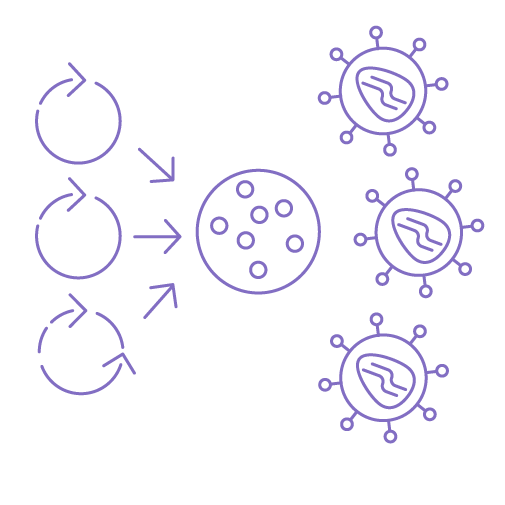
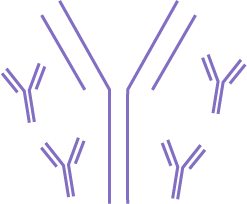
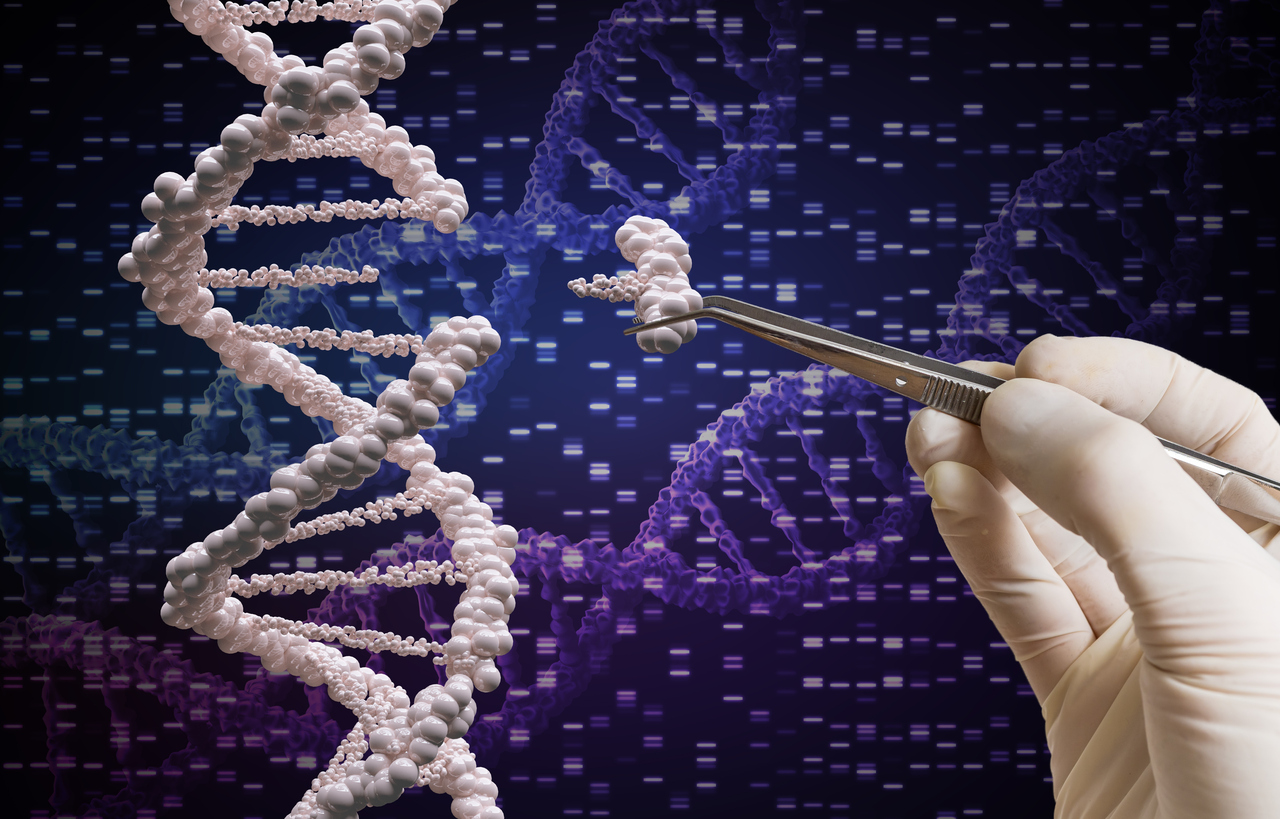
.ashx?la=en&hash=25EDFFDE8D7B397233AD6E19AC1F94CEB4A1F6EA)




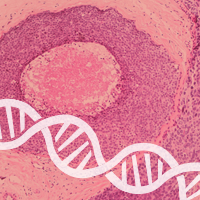
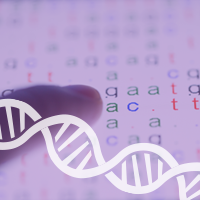
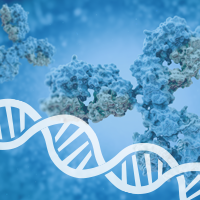
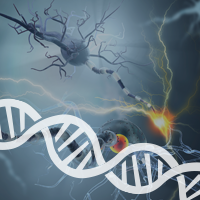

.ashx?la=en&hash=2A488B4BCC0525266C9F959BB7358D95D3222983)
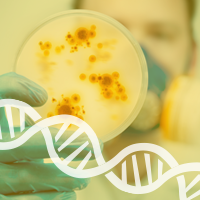
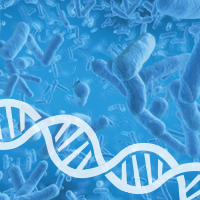

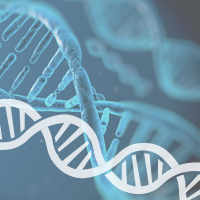
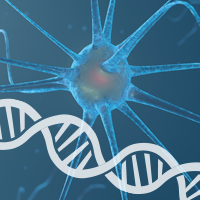
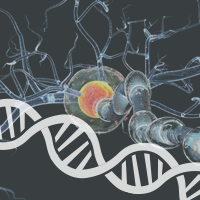
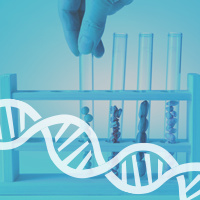
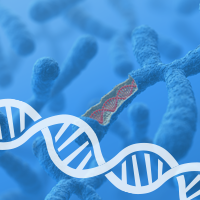
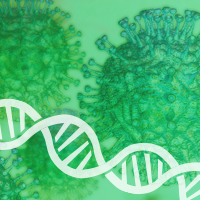
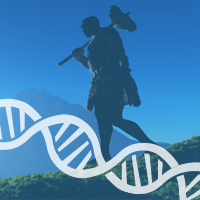
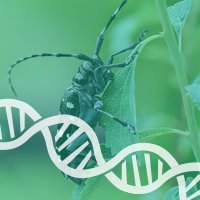
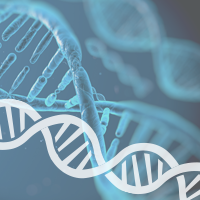
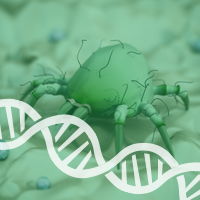
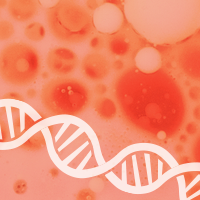


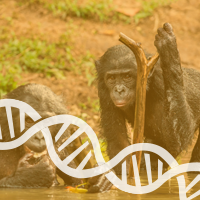
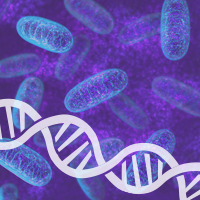
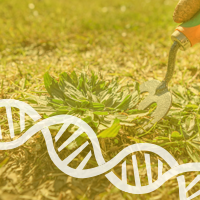

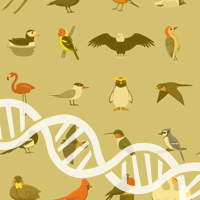

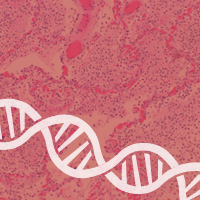
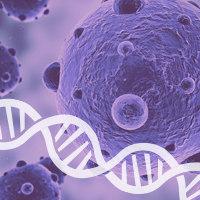

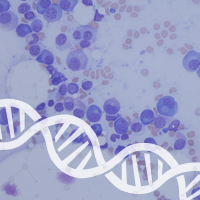
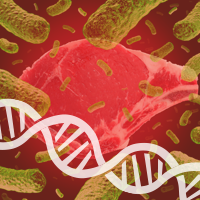
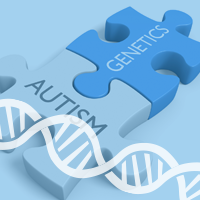
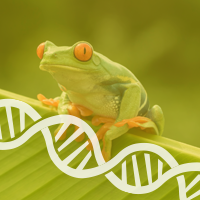
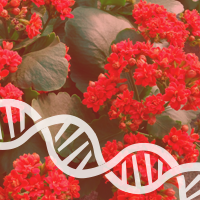

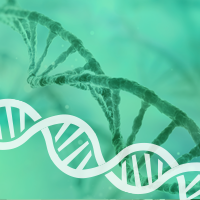
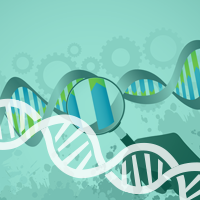
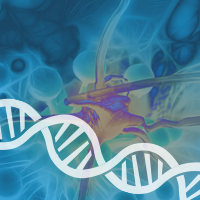
.ashx?la=en&hash=B27F00205376A1A2FB982CAAB2AA504D67421623)
